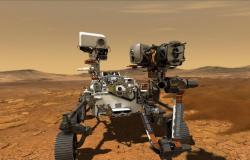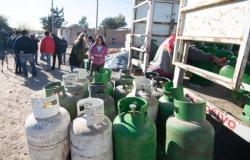Surely if you already have gray hair, you remember drinking an orange drink in the summer of the 90s or 2000s that was prepared by pouring powder from a sachet. Good news for the nostalgic, it is still selling but what if they told you that it was an unsuccessful product until it became the drink of astronauts. Tang was created in 1957 by chemist William A. Mitchell, who worked for General Foods Corporation. Originally developed as a vitamin C supplement and was launched on the market in 1959. Initially, their sales were lowbut everything changed when NASA used it during the Project Mercury space flights. In 1962, astronaut John Glenn took Tang into space to improve the taste of water drinking water, which acquired an unpleasant metallic taste in the ship’s tanks.
Improved the taste of drinking water for astronauts in orbit
Tang’s association with NASA greatly boosted his popularity. During John Glenn’s mission, Tang was used to experiment with food in orbit, proving to be a practical and nutritious solution.
Although it was not officially used during the Apollo program, rumor mill and publicity permanently associated Tang with the space program. This marketing strategy made this preparation a commercial success and a multi-million dollar business.
How is Tang made?
The Tang manufacturing process involves dehydrating fruit juice and adding vitamins and minerals. Through spray drying, liquids are converted into a fine powder that is mixed with other ingredients such as citric acid and sugars. This method allows for a long product life no need for refrigeration, which has contributed to its global popularity. The simplicity of preparation, along with its ability to preserve essential nutrients, made it ideal for space missions and homes alike.
New flavors and less sugar
Over the years, it has experimented with various marketing strategies and reformulations to adapt to the changing tastes and needs of consumers. In some markets, versions with less sugar and a variety of New flavors like grape, mango, and pineapple. These adaptations helped maintain its appeal and competitiveness in the powdered beverage market, which has seen increasing competition with the emergence of new brands and products.
Today, it remains a relevant product and is marketed in numerous countries around the world. Although its presence has diminished In some markets, it remains a popular choice in countries in Latin America, Asia and the Middle East. The brand has continued to innovate, offering versions that contain less sugar and more vitamins, and adapting to the health and wellness trends that dominate the current food and beverage market. Tang is particularly popular during the month of Ramadan in the Middle East, where it is valued for its ability to provide a quick source of energy and nutrients.
Buzz Aldrin hated him
Despite his popularity, some astronauts were not fans of Tang. Buzz Aldrin, the second human being to walk on the Moon, said in 2013 that “Tang sucks”, although it is believed that his discontent was due to Tang’s lack of financial sponsorship of NASA, despite using the space agency as a publicity stunt. However, this preparation remains part of NASA’s Food Hall of Fame, a testament to its lasting impact on space culture and everyday life.






